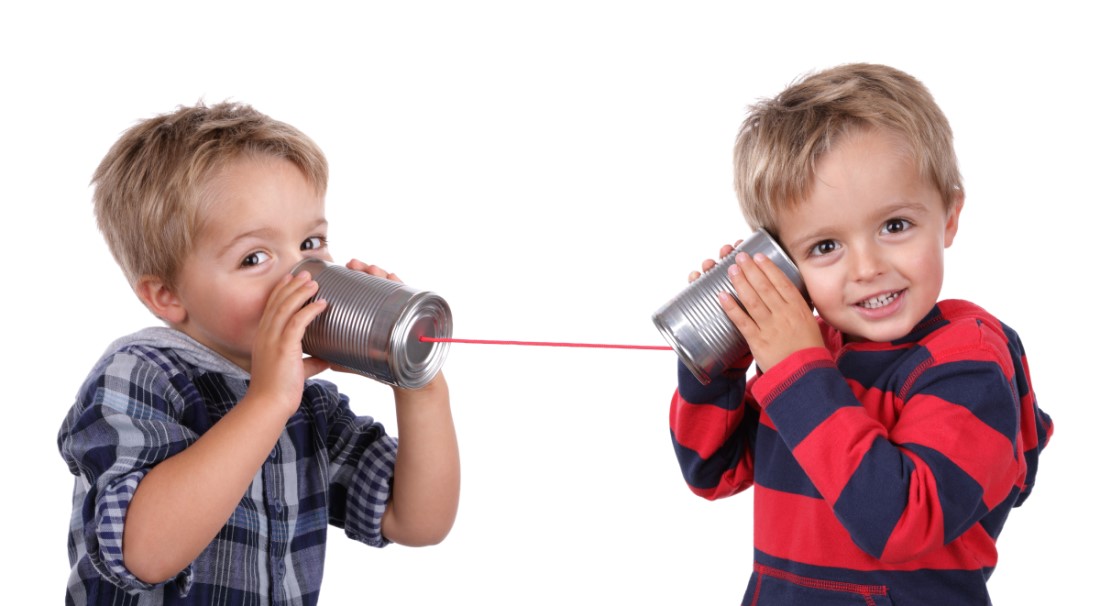Communication is everything. Imagine you are transported to a foreign country where you don’t speak the language (without your smartphone). You are milling about attempting to ask for directions or find someone who speaks your language, but no one understands what you are saying. How do you communicate with them? Speech isn’t really an option here, is it? When we cannot use our speech, we rely on other important aspects of our communication: gestures, facial expressions, and body language. Perhaps we wave someone down, looking a bit panicked to show we need help. Perhaps we find a map on a pamphlet and we can point to locations for others to see. Maybe we point to signs around us to help show the locals what we mean. These help us communicate – perhaps we even get the directions we seek!
You have now experienced what it is like to use augmentative alternative communication (AAC). AAC covers a large variety of tools, systems, and devices that we can use to support communication without verbal speech. This is an area of speech-language pathology that is not as well recognized as articulation and language disorders but is an important aspect of communication for many today. Simply put, AAC is all of the ways that we communicate with others without talking. We use AAC every day, from silent gestures to friends to written notes to coworkers. Everyone can use AAC!
One important step is finding an AAC system that works best for a client. Sometimes a client can communicate with their body alone with gestures and sign language vocabulary; this is known as an unaided system. Aided systems require a device or item. When it comes to aided systems, speech therapists have to consider a variety of things, including how someone can use an item or device. Aided systems can be as simple as writing on a piece of paper or as advanced as portable computers made solely for communication.
There are many elements that go into deciding which AAC device best fits for each user, because one size does not fit all! AAC devices can be no tech, low tech, mid tech, or high tech.
- No tech devices describe items that can be used without technology, while high tech devices are more advanced, usually computers or tablets with programs that have selectable icons and images.
- High tech devices are not always expensive, nor difficult to use. Some applications allow phones to speak what you type. There are even applications available on iPads for clients to use for speech. High tech devices additionally come with a variety of recorded voices that allow users and others around them to hear their words. Many AAC details are customizable and you can add images, icons, and more to add important vocabulary, such as family members, favorite snacks and toys, and personal information, such as name and age.
Some clients may have difficulties using their hands to select buttons or point to icons. There are a variety of different ways to access AAC! If they have difficulty using their fingers or hands, clients may use switches, which are round buttons, to help them select buttons. There are also devices that track eye movement; clients can look at the button they want to choose and the device will select it.
AAC can provide short-term or long-term support. Some people may use AAC devices their whole life, while others only need it during recovery or to help them while they build their language and speech skills. Some fear that using AAC may limit their loved ones’ speech production, which is a common myth related to AAC. In reality, many forms of AAC use icons and audio feedback that helps support and build language. AAC can help people build up communication skills from very little speech or indicating basic needs to being able to fully express themselves.
Speech-language pathologists can help train users in how to best utilize their tools or devices. In speech therapy, therapists can teach their clients how to build their language, increase their vocabulary, and use their device functionally in the real world! In the same way that we teach children to make certain sounds, we teach clients how to use devices to the fullest. Just like with speech sounds, many clients learn a new motor plan to find their words. However, AAC should not be restricted to a speech therapy room – users should be able to take their voice everywhere with them, whether that’s in the classroom, at the park, or at home!
The ultimate goal of AAC is effective communication that allows the user to successfully navigate and fully enjoy their lives. Regardless of how their verbal skills develop over time, AAC becomes part of a client’s voice. Communication is more than our speech alone – it’s our expressions, our gestures, and our body language that help us express ourselves to the fullest. We all have our own unique voices, whether we talk with our mouths or through our devices. Communication is everything!
~~~~~~~~~~~~~~~~~~~~~~~~~~~~~~~~~~~~~~~~~~~~~~~~~~~~~~~~~~~~~~~~~~~~~~~~~~~~~~~~
Megan Zecher, MS, Speech Language Pathologist
Emily Krauter, Administrative & Social Media Assistant
Cites and For More Information:
- ASHA’S AAC Overview and Resources: https://www.asha.org/practice-portal/professional-issues/augmentative-and-alternative-communication/
- ASHA: About AAC: https://www.asha.org/public/speech/disorders/aac/
- Vanderbilt Kennedy Center No Tech and Low Tech for Children with ASD: https://vkc.vumc.org/assets/files/resources/aacasd.pdf
- Information on Low Tech and No Tech Devices: https://liberator.net.au/support/education/aac/low-tech-vs-high-tech
- TobiiDynavox Resources and Devices: https://us.tobiidynavox.com/
- AbleNet Resources and Devices: https://www.ablenetinc.com/
- LAMP Words for Life Application for Communication: https://aacapps.com/
- TouchChat Application for Communication: https://touchchatapp.com/
- Proloquo2Go Assistiveware Application for Communication: https://www.assistiveware.com/products/proloquo2go
- Sonoflex (Application for Communication): https://www.tobiidynavox.com/software/content/sono-flex-for-communicator-5/
